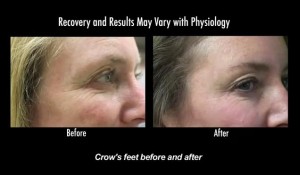The desire to create or maintain a more youthful appearance is widespread in Los Angeles. Innovations in technology now allow an array of option to address specifics with both surgical and nonsurgical treatments. Botox has thus become one of the foundations of minimally invasive and nonsurgical aesthetic facial treatments.
People in Los Angeles get Botox for a number of cosmetic reasons. Botox temporarily reduces the appearance of wrinkles for approximately three to four months. Injections smooth glabellar frown lines between the eyebrows and have to potential to temporarily slightly alter aspects of the face. It may also be used in combination with other aesthetic treatments. Botox is increasingly being used as part of an anti-aging regimen to prevent future wrinkles.
BOTOX BASICS IN LOS ANGELES
Botox (onabotulinumtoxinA) is a formulation of the botulinum toxin type A. There are seven known serotypes of botulinum toxins labeled A to G produced by different strains of the bacteria clostridium botulinum. All botulinum toxins inhibit the release of acetylcholine, a neurotransmitter.
Refined to a nontoxin protein, Botox is used in small doses and administered through injections. The inhibition of acetylcholine blocks the neurotransmission of muscle contraction, resulting in either weakening or paralyzing certain muscles. Botox treats cosmetic, therapeutic and medical issues, including:
- Temporary removal of wrinkles
- Severe underarm sweating
- Cervical dystonia
- Blepharospasm
- Strabismus
THE HISTORY OF BOTOX
The FDA first approved Botox to treat eye muscle spasms in 1989. Many doctors and patients also noted the improvement of facial lines, which ignited cosmetic application interest. Research began on the toxin’s effect on glabellar frown lines, with the first study on its aesthestic effects published in 1992.
The FDA approved Botox for cosmetic use in 2002 following more research and controlled trials to ensure safety and efficacy. The FDA approved two additional botulinum toxin type A formulas. Dysport (abobotulinumtoxinA) was approved for cosmetic use in 2009. Xeomin (IncobotulinumtoxinA) was approved in 2011.
THE CAUSE OF WRINKLES
Facial wrinkles result from repetitive facial expressions and/or aging. Environmental and emotional reactions processed in the brain are expressed in movement of the body and face. The brain triggers nerve fibers to create motion or contraction in muscles. With common, repetitive facial expressions, the skin creases. Over time, the creases become permanent wrinkles. Age also plays a factor since skin gradually loses its firmness and elasticity.
HOW BOTOX STOPS WRINKLES
Botox counteracts wrinkles with the temporary inability of muscle contraction. It blocks nerve cells from releasing acetylcholine, which triggers the muscles. The overlying skin thus remains crease free and appears smooth.
Botox: Glabellar Frown Lines
The area of the face between the eyebrows and right above the eyes is known as the glabella. Usually a smooth surface, glabellar frown lines appear as vertical creases if the skin becomes too elastic. They result from the corrugator muscles between the brows contracting inward, along with the procerus muscle contracting down toward the nose.
The muscles are usually engaged during anger, concentration and squinting. Botox helps the glabellar muscles to stay relaxed and subdues over-expressions that cause deep wrinkles.
Botox: Crow’s Feet
Crow’s feet lines appear on the outer corner of the eyes. They result from laughter, squinting and/or smiling. Botox is injected into specific areas of the orbicularis oculi muscles, which surround the eye area.

Results with Botox were significant in addressing crow’s feet wrinkles for this Los Angeles patient.*
Botox: Horizontal Forehead Lines
Over-expression is also common in the forehead region. Horizontal forehead lines result from repetitive frontalis muscle contractions and loss of elasticity. Botox is injected directly into specific muscles to eradicate lines and eliminate sagging or drooping. Lines on the upper forehead are resolved with lateral brow muscle injections. Lines on the lower and middle forehead are resolved with medial brow injection, which include the corrugator muscles.
AN EYEBROW LIFT WITH BOTOX
The eyebrow arches flatten and lower over time. Facial expressions contract surrounding muscles. Since these muscles work in opposition up and down, eyebrows and the forehead may sag. Botox counteracts the sagging by raising the eyebrows a few millimeters.
According to Dr. Sanusi Umar, patients can choose how much they want eyebrows raised. Additionally, shapes of the eyebrow can be altered to achieve more arch, flared or horizontal brow. Botox is injected into the depressor muscles counteract the downward pull of the brow’s medial ends of the brows downward.
HOW LONG DOES IT TAKE TO SEE BOTOX RESULTS?
Following a Botox treatment, results can take between 3-7 days. Here is a video where Dr. Umar explains more:
BOTOX EFFICACY AND CAUTIONS
Botox usually remain active in the body for three to four months. Once the result of Botox diminishes, wrinkles that subsided will appear similarly to before treatment.
As always, consult with a medical profession about any cosmetic treatment. Side effects from Botox may include pain at the injection site, flu-like symptoms, headaches and upset stomach. Avoid use if pregnant or breastfeeding.

